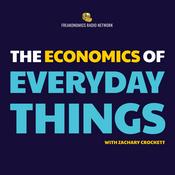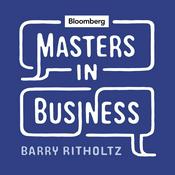62 episodes

Trading Was HARD Until I Learned This 1 Simple Entry
2025/11/17 | 12 mins.
Welcome to season 4, episode 6 of the Stock Trading for Beginners Podcast!When I first started trading, charts felt random and frustrating—until I learned the breakout backtest strategy. It transformed my portfolio, and now beginners in our group are spotting consistent setups in weeks. Building on last episode's "buy at support, sell at resistance" framework, here we discuss the precise entry points for low-risk trades in bullish stocks. Listen for a simple, patient approach that minimizes stress and maximizes wins.Resource:Join our FREE Skool group: https://www.skool.com/tradingKey Topics:Step 1: Spot Proven Winners and Build Your WatchlistFocus on bullish stocks in uptrends for low-risk trades—nothing rises straight up, so capitalize on natural rhythms. Diversify with speculative trend-changers if your risk tolerance allows, but beginners should stick to strong performers. Use AI like Grok or ChatGPT to generate 30-50 bullish stock ideas (e.g., heading into 2026). Or grab our free list in the Skool group. Confirm uptrends on TradingView's weekly chart: Look for higher highs/lows (market structure) and Ichimoku Cloud (above lines with green future cloud = bullish). Example: Coinbase post-April 2025 shows bullish engulfing candles and volatility but upward trend; avoid pre-2025 bearish phases with lower highs/lows.Step 2: Wait for the PullbackPatience is key—don't chase breakouts or buy at resistance, a common beginner mistake leading to panic sells. Overextended stocks reverse sharply; recent October 2025 red days (5-20% drops) follow massive prior gains (50-100%). Identify resistance (prior highs, indicators) and let price come to you. Pullbacks are healthy for momentum—buyers step in at support, positioning you for the next leg up.Step 3: Enter at Support ZonesWhen pullbacks hit support with confluence (multiple indicators aligning), that's your low-risk entry. Use Ichimoku Cloud, Fibonacci, Gann Squares, or flipped resistance. Don't fear red days—they're buying opportunities. In volatile markets like November 2025, enter cautiously to avoid deeper retracements. This yields high win rates, low stress, and high rewards as bullish stocks resume uptrends.TakeawaysDon't chase—build a watchlist, confirm trends, wait for pullbacks, and enter at support for conviction and gains. This strategy boosted my portfolio this year and helps our community trade flexibly without constant monitoring. Start with a few stocks to build skills.For video lessons, modules (e.g., on Ichimoku), weekly analysis, and details on my new beginner chart-reading program, join the Skool group at https://www.skool.com/trading. More podcasts coming—see you next episode!Send me some feedback!Join Our Free Community on Skool:https://www.skool.com/trading

The ONLY Trading Strategy You Will Ever Need
2025/11/10 | 10 mins.
Welcome to season 4, episode 5 of the Stock Trading for Beginners Podcast!When I first started trading, I felt totally overwhelmed staring at price charts without knowing when to enter. Then I discovered a one-rule strategy that changed everything: only buy at support. After six months of trading real money, my portfolio jumped 144%, and I only spent minimal time scanning charts. In this episode, I break down this simple, stress-free approach that delivers real results—no fancy setups required. Listen to get the framework, then check out our free trading group for video lessons and examples.Resource:Join our FREE Skool group: https://www.skool.com/tradingKey Topics:Building a Watchlist of Bullish Stocks I start by explaining how to spot bullish stocks without needing screeners or scanners. Use AI tools like Grok or ChatGPT to generate a list of 30-50 stocks in trending sectors (e.g., Palantir, Tesla, Amazon). Plug them into TradingView, check for higher highs and higher lows on the weekly timeframe, and use the Ichimoku Cloud for a quick bullish/bearish confirmation—above the cloud with a green future cloud means it's a keeper.Learning from Past Mistakes with Market Structure I share my own story with Tesla: It hit an all-time high around $414.50 in late 2021, then shifted to bearish lower highs and lows, dropping to $100 by January 2023. I held through massive unrealized losses because I ignored technicals and focused only on fundamentals. Fast-forward to now in late 2025, and Tesla's showing positive structure, building a base above that old $414.50 resistance—proving why bullish market structure keeps you on the winning side.Identifying Support Zones for Safe Entries Once you've confirmed a bullish trend, I dive into finding support zones where buyers step in and prices are likely to hold. Use historical price data (like old resistance turning into support), plus tools like the Ichimoku Cloud, Fibonacci retracements, and Gann squares. Don't fear pullbacks in bull markets—they're prime buying opportunities for better risk-reward. I emphasize accumulating shares here to keep things low-stress.Taking Profits at Resistance (or Holding for Momentum) Finally, I cover when to sell: at resistance zones identified the same way as support—historical levels and indicators. If you like trading in and out, lock in gains here to avoid mistakes. Personally, I prefer holding through volatility in bullish stocks to ride the momentum, but either way, never buy at resistance.TakeawaysThis boils down to one rule: only buy at support in bullish stocks—it's shockingly simple but tough with emotions in play. I've seen great results personally, and beginners in our group are up and running with positive gains in weeks. Trading doesn't have to be overwhelming; this strategy proves it.Join the Skool group at https://www.skool.com/trading for our free course with video modules, weekly analysis, a list of 30 bullish stocks, and community support to see this in action.Send me some feedback!Join Our Free Community on Skool:https://www.skool.com/trading

If Trading Is So Profitable, Why Doesn’t Everyone Do It?
2025/11/03 | 11 mins.
Welcome to season 4, episode 4 of the Stock Trading for Beginners Podcast! If trading is so profitable, why doesn't everyone do it? In this episode we talk about the 7 invisible barriers that sabotage beginners—not the markets or smarts, but fixable issues like info overload and mindset traps. I share how to overcome them for stress-free trading.Resource:Join our FREE Skool group: https://Skool.com/tradingKey Topics: Overwhelm from Information Overload I wasted months on day trading because endless online strategies led to analysis paralysis. The fix: Reflect on your schedule and eliminate mismatched approaches. Align with your lifestyle before diving deep—join a group or mentor for a fitting strategy.Mindset Over Mechanics Charts matter, but emotions like greed, fear, anger, overconfidence, and poor discipline derail plans. I counter them with disciplined entries, journaling, breaks, rule adherence, and checklists. Master psychology to avoid quitting early.Craving Quick Wins Over Steady Gains Social media flaunts overnight riches, but real success is patient compounding. I warn against chasing flashiness—if you need fast cash, you'll make bad decisions. Focus on long-term strategies where patience equals profits.Clash with Daily Routines Day trading didn't fit my 9-5 and family life. I recommend swing or position trading for flexibility—no need to watch markets live. Choose strategies that match your commitments to avoid burnout.Underestimating Skill-Building Time Mastery isn't just videos; it's hands-on practice charting stocks and spotting patterns. I emphasize deliberate grind—excitement fades, but discipline builds you as a trader. Commit to the work beyond initial hype.Falling for Flashy Shortcuts Relying on others' picks keeps you dependent. I started with mentors but aimed for independence—learn to fish, build conviction. Avoid unease from copying; use communities to gain skills for solo trading.Lacking a Good Community Trading alone breeds doubt and early quits. I stress joining accountability groups focused on the same strategy for support, shared charts, and habits. It's key to persistence.TakeawaysThese barriers are fixable with mindset shifts, lifestyle-aligned strategies, and community support. Trading becomes simple once tackled. Join the Skool group at https://www.skool.com/trading for our free course, weekly analysis, and partners.Send me some feedback!Join Our Free Community on Skool:https://www.skool.com/trading

How Much Money Do You REALLY Need to Start Trading Stocks?
2025/10/27 | 8 mins.
Welcome to season 4, episode 3 of the Stock Trading for Beginners Podcast! We're covering a common beginner mistake: thinking you need a ton of cash to start trading stocks profitably. I break down how much you really need, why account size isn't the barrier you think it is, and how to get started smartly.Resource:Join our FREE Skool group: https://www.skool.com/tradingKey Topics: Account Size Is Relative—It Doesn't Determine My SuccessI used to think I needed tens of thousands to trade, keeping me in analysis paralysis. Success is about percentages, risk management, and growth. I start with under $1,000 and scale up from savings or side income. I focus on consistent gains—a 10% return is the same skill on any account size. Use brokerages like Robinhood or Fidelity with low minimums and fractional shares for high-priced stocks like Tesla. Our Skool poll shows half beginners started under $1,000, proving it's relative.Stocks Are Safer Than Options for BeginnersOptions tempt small accounts with leverage but are complex and risky due to time decay and volatility. Studies say 70-90% of options traders lose money; events like the October 10th crypto crash show risks. I recommend stocks with momentum—no expirations let me hold through dips. Fractional shares allow 1-3% risk per trade. Avoid options' manipulation and max pain.Trade to Grow Wealth, Not for Instant IncomeTreating trading as a job for bills leads to emotional risks like chasing wins or panic-selling. I focus on long-term compounding with a plan to control emotions. Trade only affordable money, build other income to fund accounts. Even small accounts grow steadily without rushing.TakeawaysStart small, focus on percentages, add funds over time. Choose stocks over options for safety and ease. Trade for long-term wealth, not quick cash. Join the Skool group at https://www.skool.com/trading for the free course and community. Send me some feedback!Join Our Free Community on Skool:https://www.skool.com/trading

Stop Losing Money - Master Your Mind with These Trading Psychology Hacks
2025/10/20 | 17 mins.
Welcome to season 4, episode 2 of the Stock Trading for Beginners Podcast! We're talking trading psychology, breaking down five emotional traps that sabotage your trades and sharing practical fixes to help you trade smarter and more profitably.Resource:Join our FREE Skool group: https://Skool.com/tradingKey Topics: Five Emotional Traps & FixesGreed: Chasing BreakoutsProblem: I see a stock soaring (like Tesla at $460 resistance), and FOMO pushes me to buy at the peak, only to face a reversal and loss.Why It Happens: A scarcity mindset, dopamine-driven hype, and anchoring bias (fixating on a stock’s recent surge) cloud my judgment.Fix: I cap my weekly trades, focus on long-term disciplined trading, and avoid chasing quick profits. I stick to charts, not news or social media hype.Fear: Selling Too EarlyProblem: I panic-sell at support or cut winners short, like when I sold Tesla at $100 in 2022-23, missing the rebound.Why It Happens: Loss aversion, tying my self-worth to trades, and worrying about looking foolish drive irrational exits.Fix: I journal every trade, noting why I entered or exited. Reflecting on whether decisions were logic-based or fear-driven helps me trust my strategy.Anger: Revenge TradingProblem: After a loss, I feel cheated and jump into risky trades to “win back” money, often digging a deeper hole.Why It Happens: Entitlement bias makes me think the market owes me, triggering impulsive, fight-or-flight trades.Fix: I take a break—a day or a week—to reset emotionally. Stepping away or going for a walk keeps me rational.Overconfidence: Ignoring SignalsProblem: After a winning streak, I feel like a market genius, ignoring charts or skipping stop-losses, like buying at resistance despite signals.Why It Happens: The illusion of control, confirmation bias, and the Dunning-Kruger effect (overestimating my skills) lead to risky moves.Fix: I stick to my strategy rules, using cues like sticky notes to remind myself to buy only at support and stay disciplined.Weak Discipline: Abandoning StrategyProblem: I ignore my rules, swayed by impulse, market noise (like X posts), or decision fatigue, leading to inconsistent trading.Why It Happens: Present bias makes me chase instant gratification over long-term goals, especially without clear rules.Fix: I use a pre-trade checklist for entries, exits, and risk management. Following my strategy (shared in the Skool group) keeps me on track.TakeawaysStart Small: I pick one fix, like journaling or a checklist, to tackle emotional traps.Join the Community: I invite you to Skool.com/trading for my free strategy course, rules, and community support.Stay Disciplined: I focus on charts, stick to my strategy, and avoid emotional trading to boost profitability.Thanks for listening! Join me for the next episode, and let’s connect on Skool.Send me some feedback!Join Our Free Community on Skool:https://www.skool.com/trading
More Business podcasts
Trending Business podcasts
About Stock Trading for Beginners
Listen to Stock Trading for Beginners, Honest Money and many other podcasts from around the world with the radio.net app

Get the free radio.net app
- Stations and podcasts to bookmark
- Stream via Wi-Fi or Bluetooth
- Supports Carplay & Android Auto
- Many other app features
Get the free radio.net app
- Stations and podcasts to bookmark
- Stream via Wi-Fi or Bluetooth
- Supports Carplay & Android Auto
- Many other app features


Stock Trading for Beginners
download the app,
start listening.






































